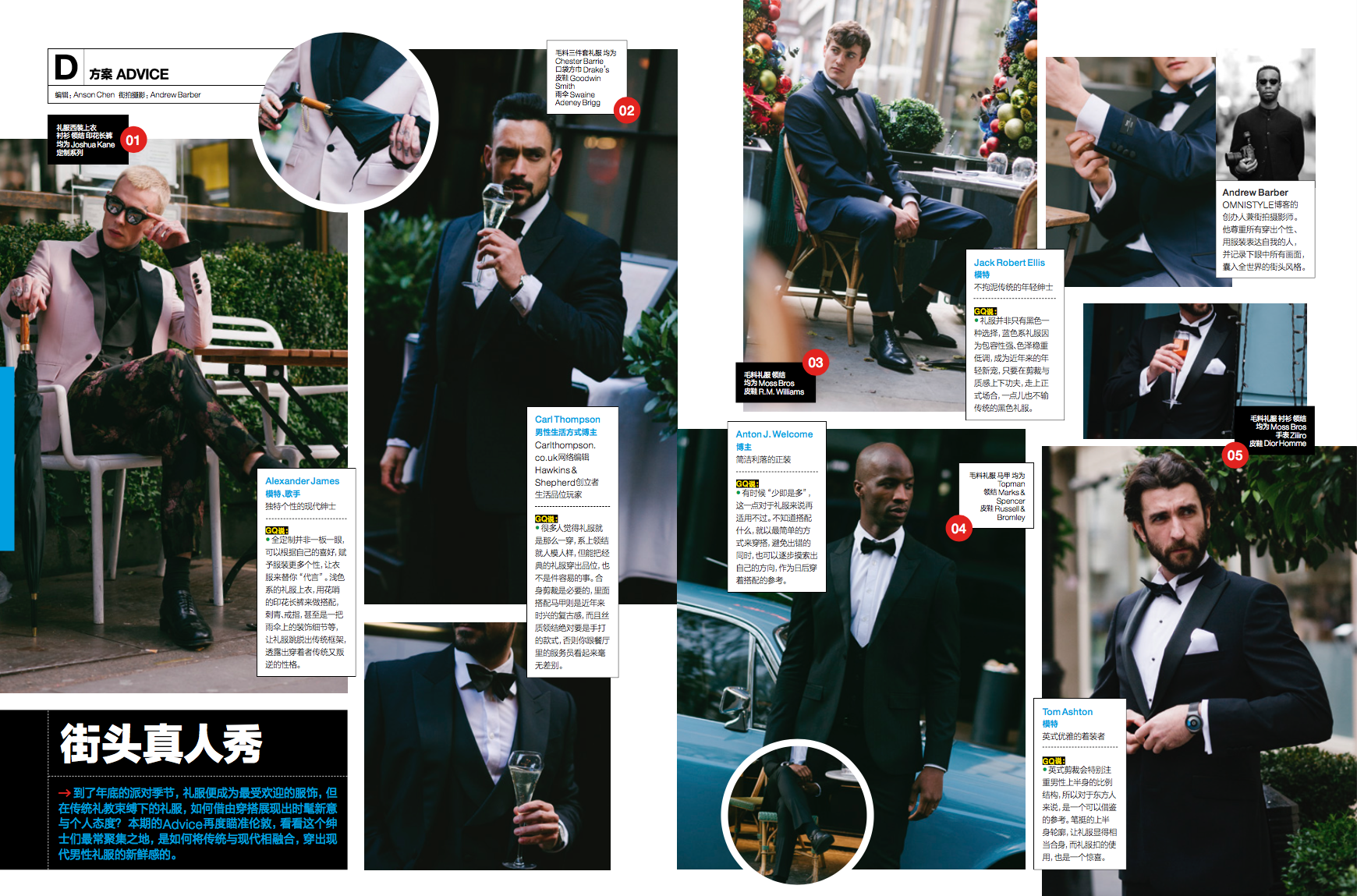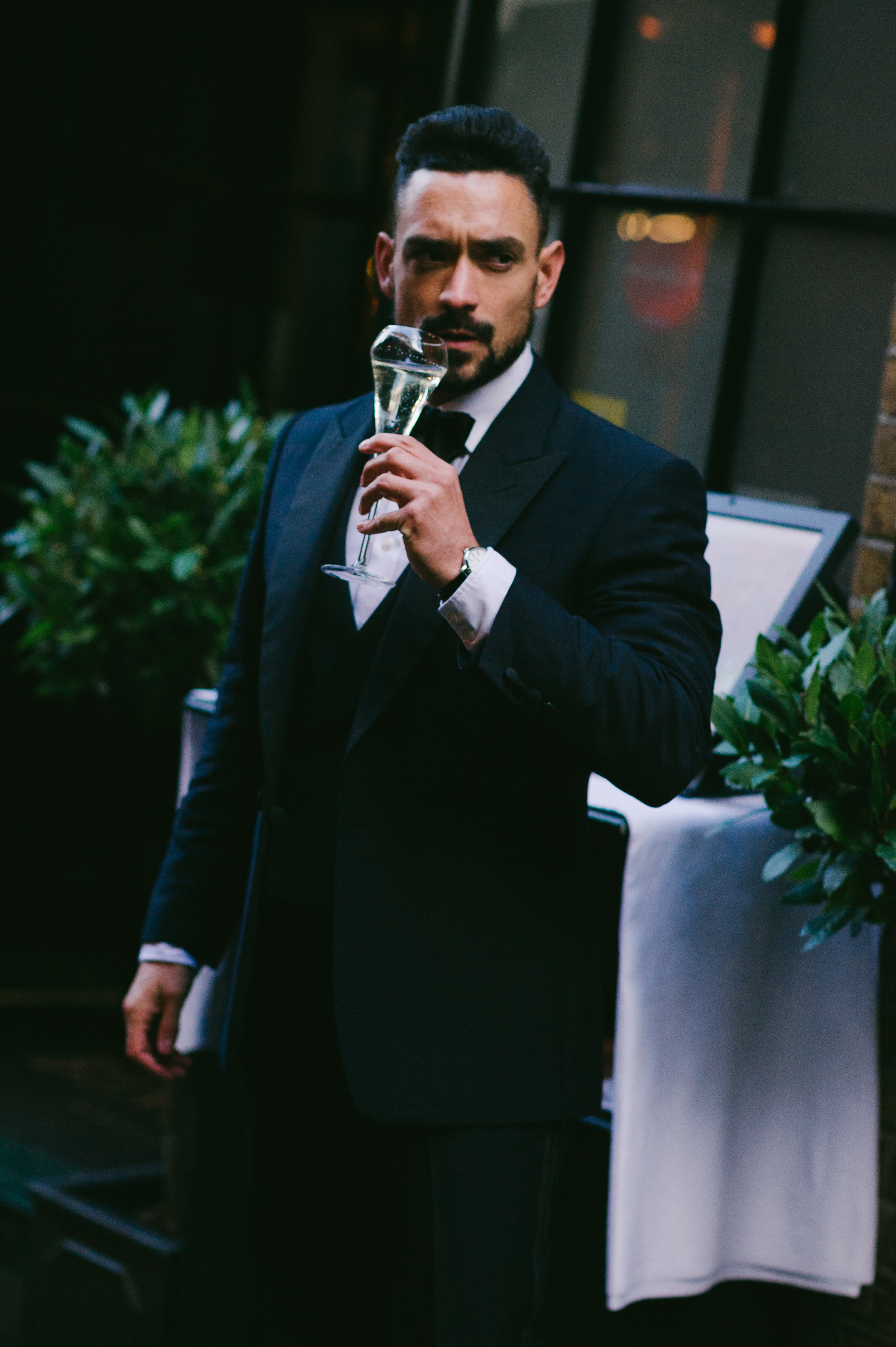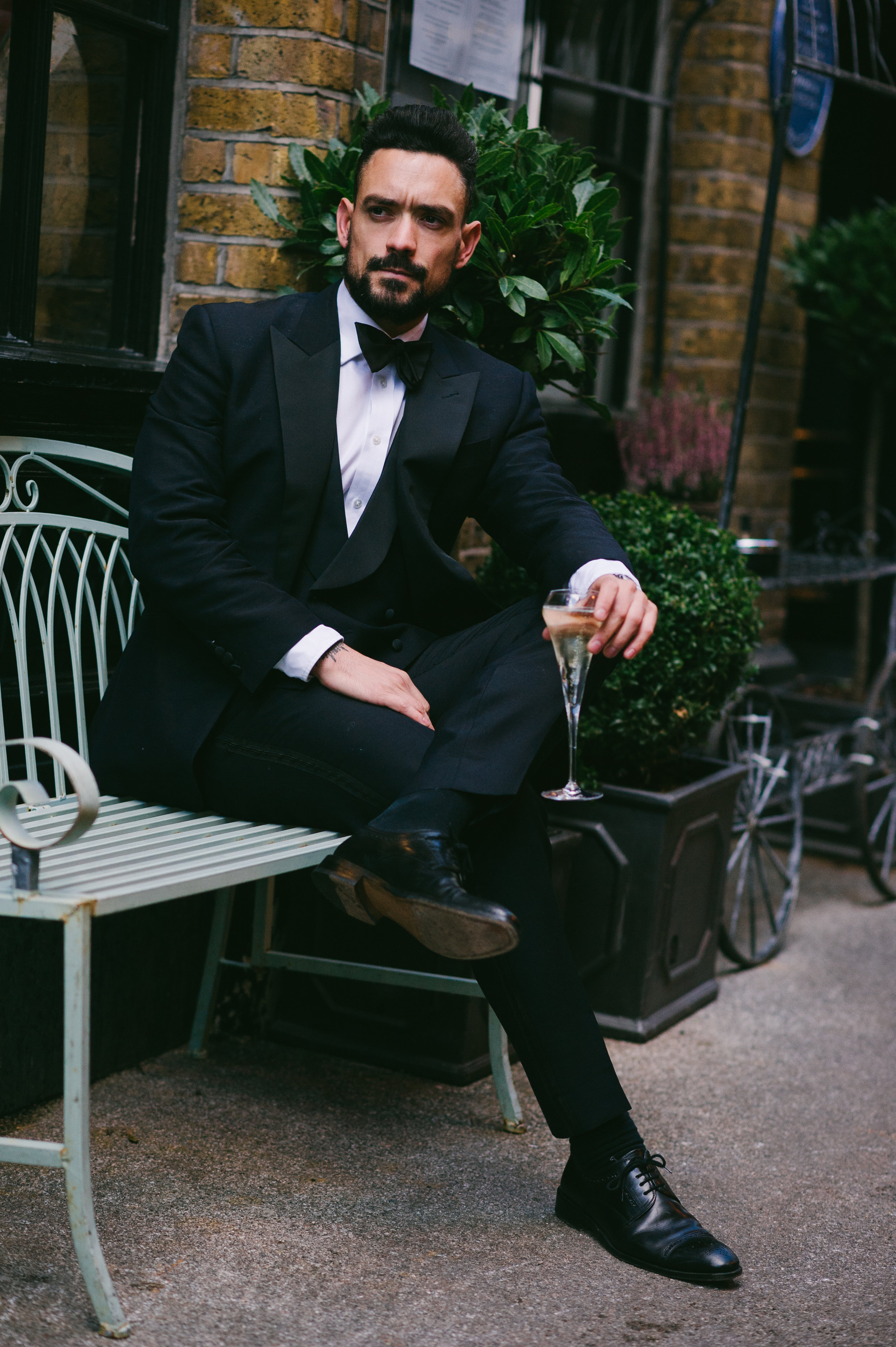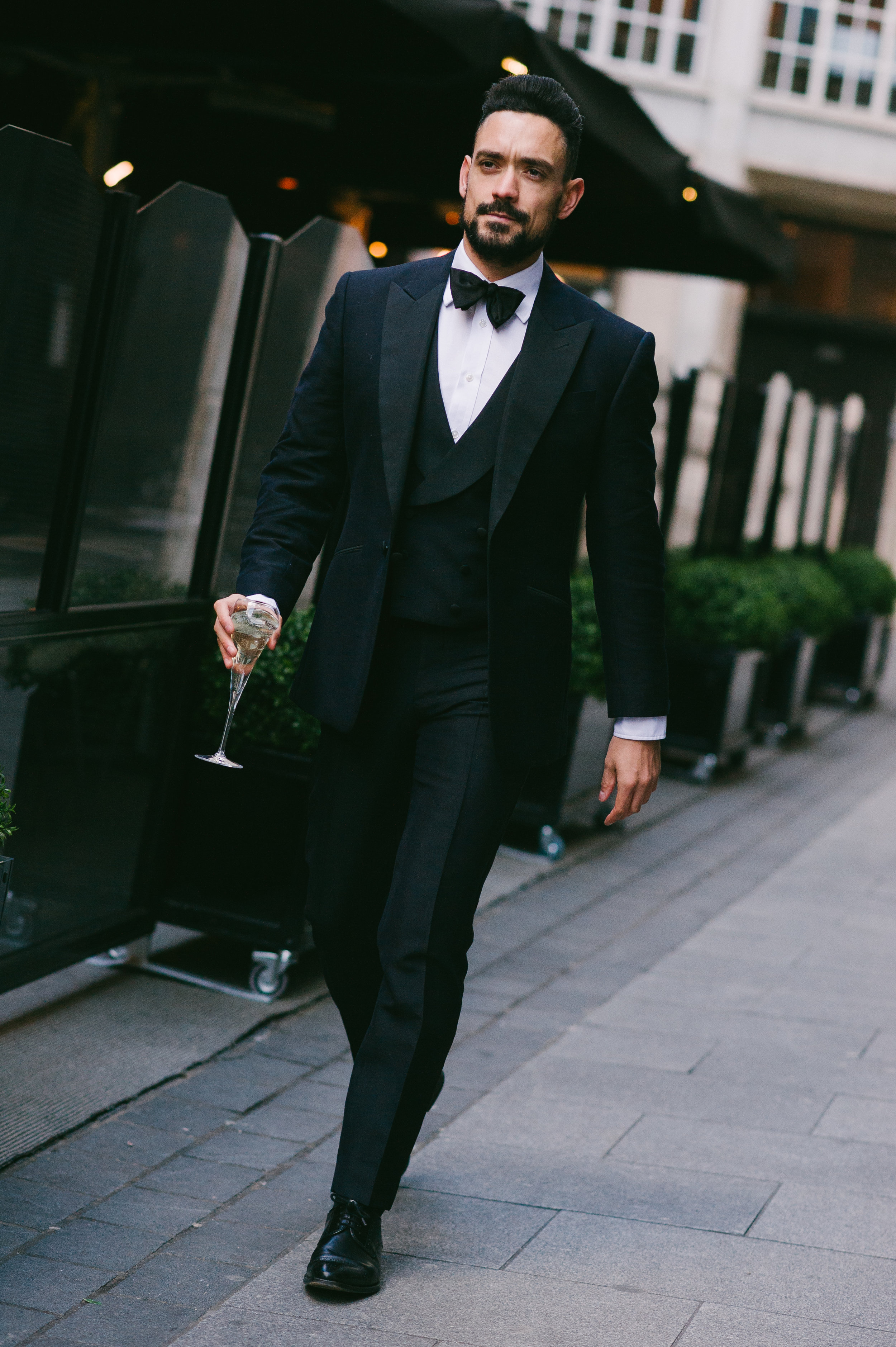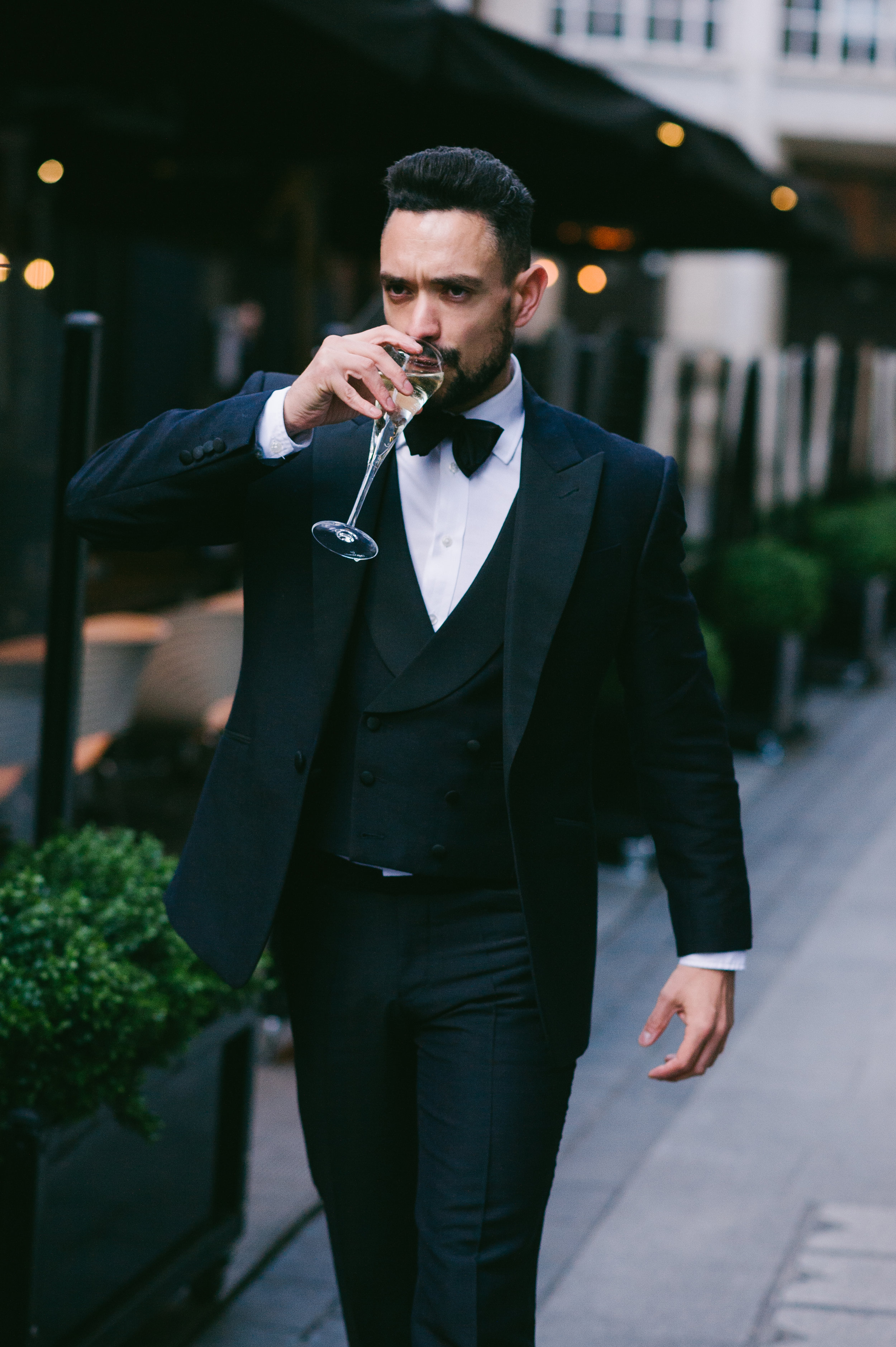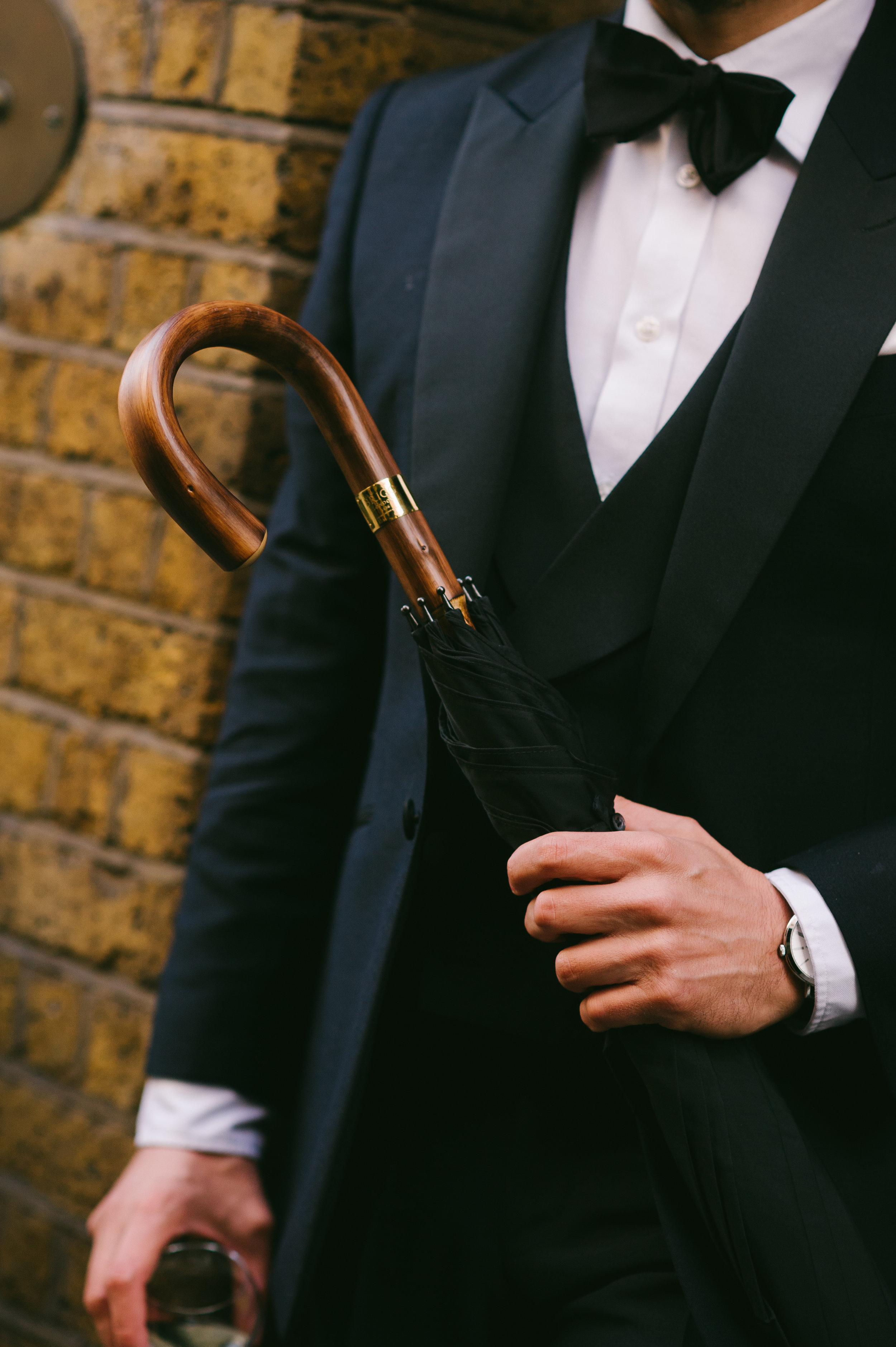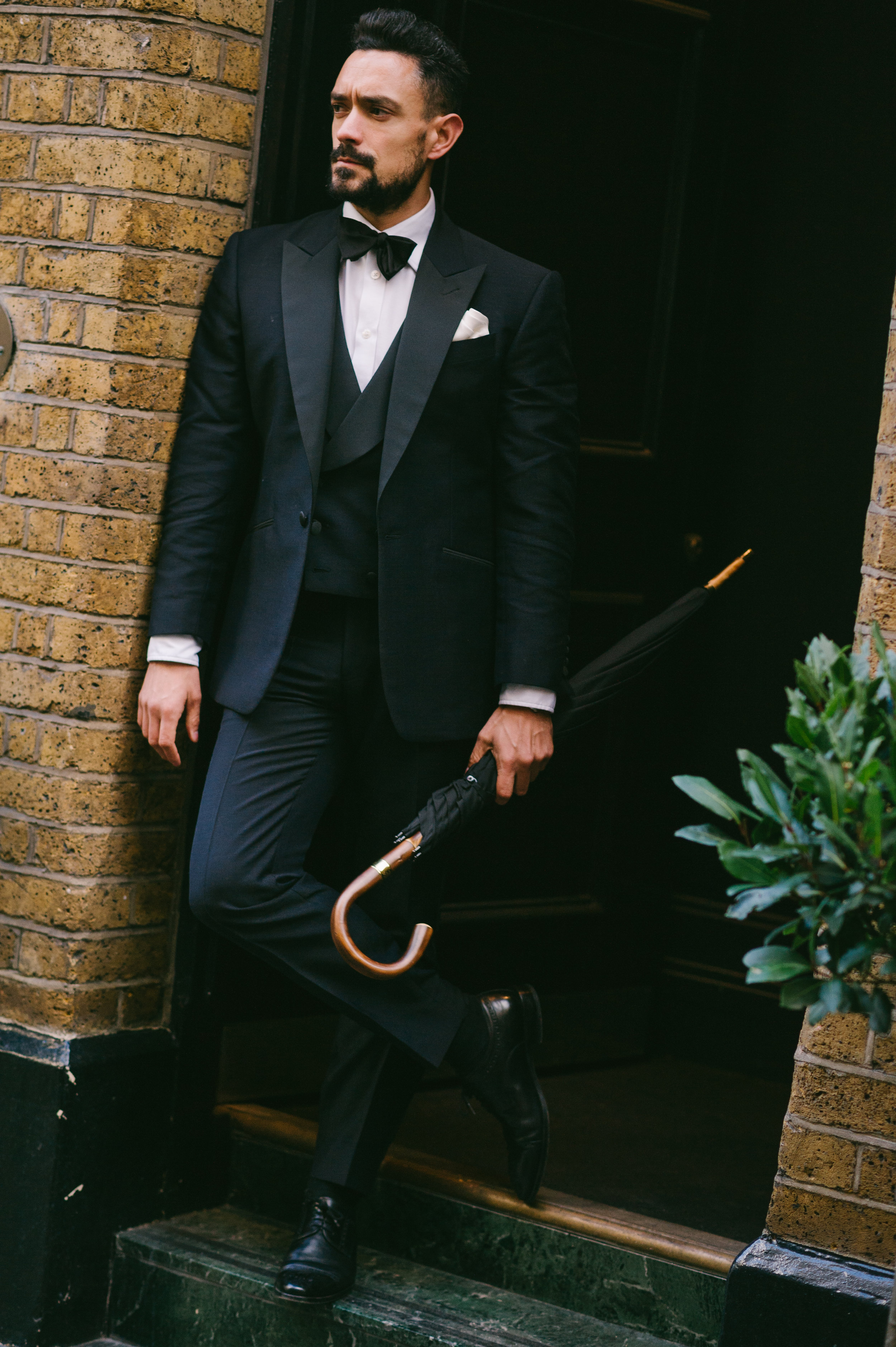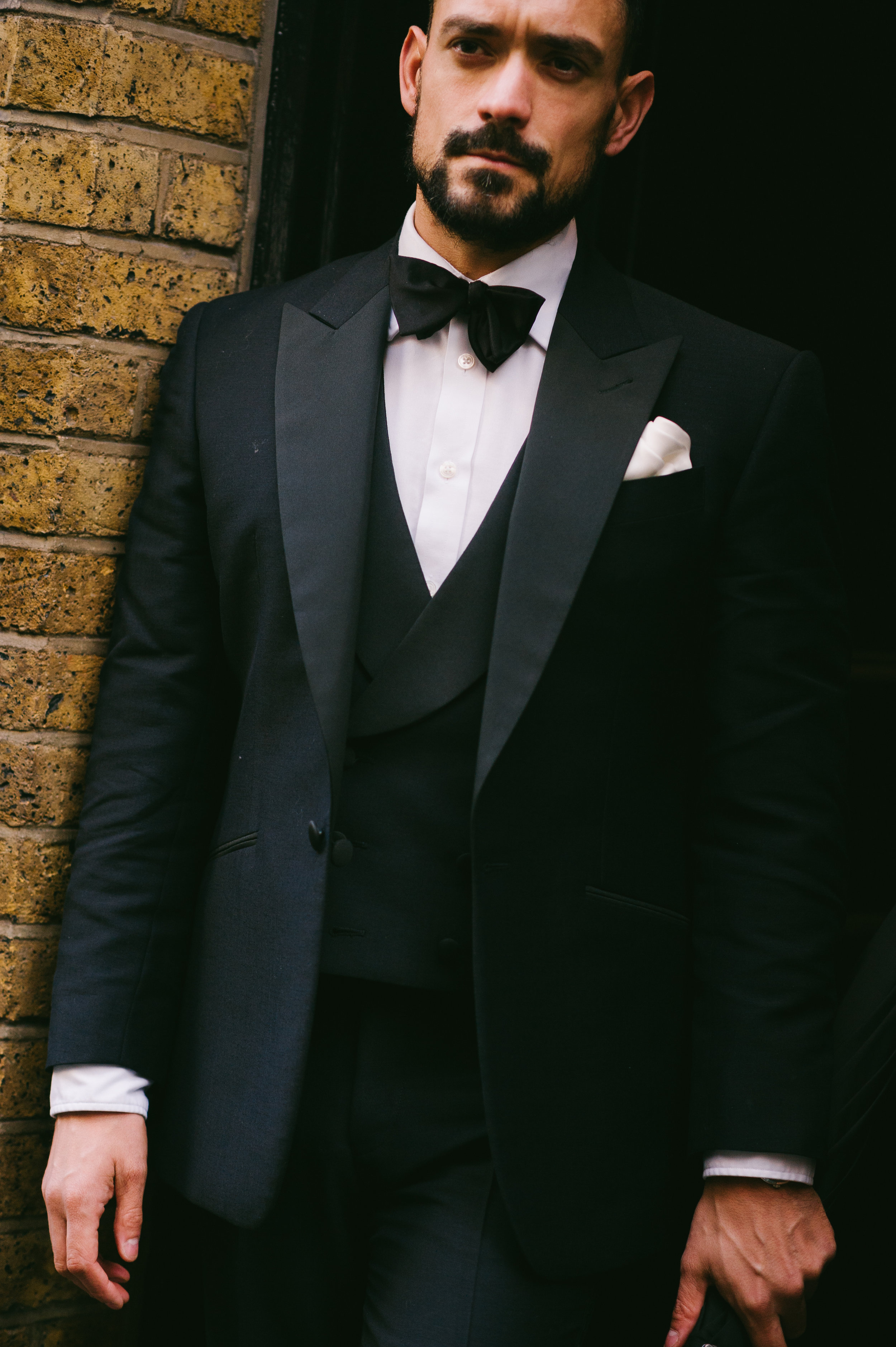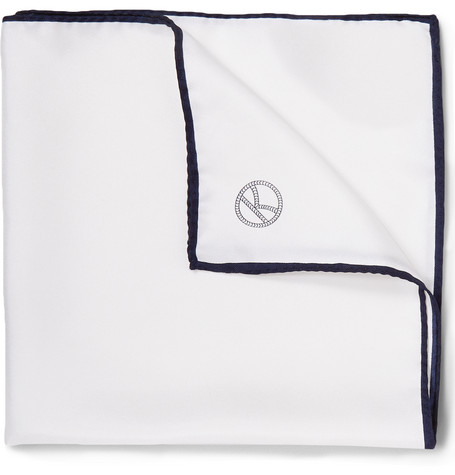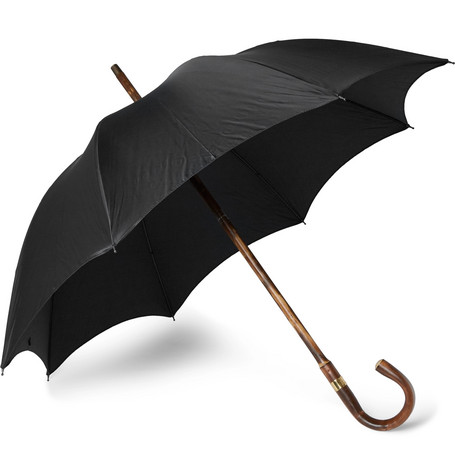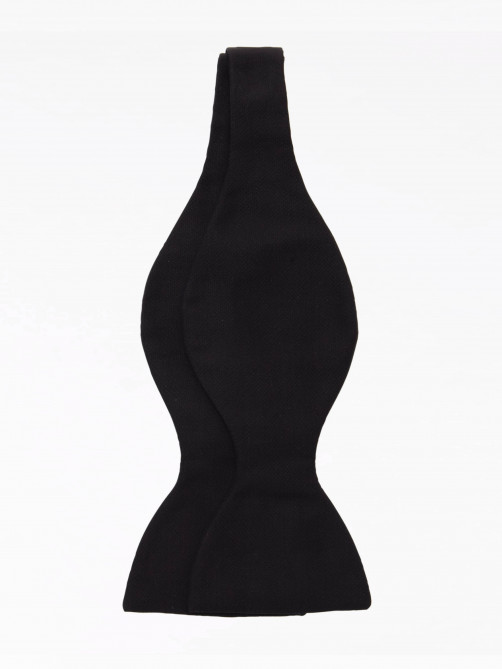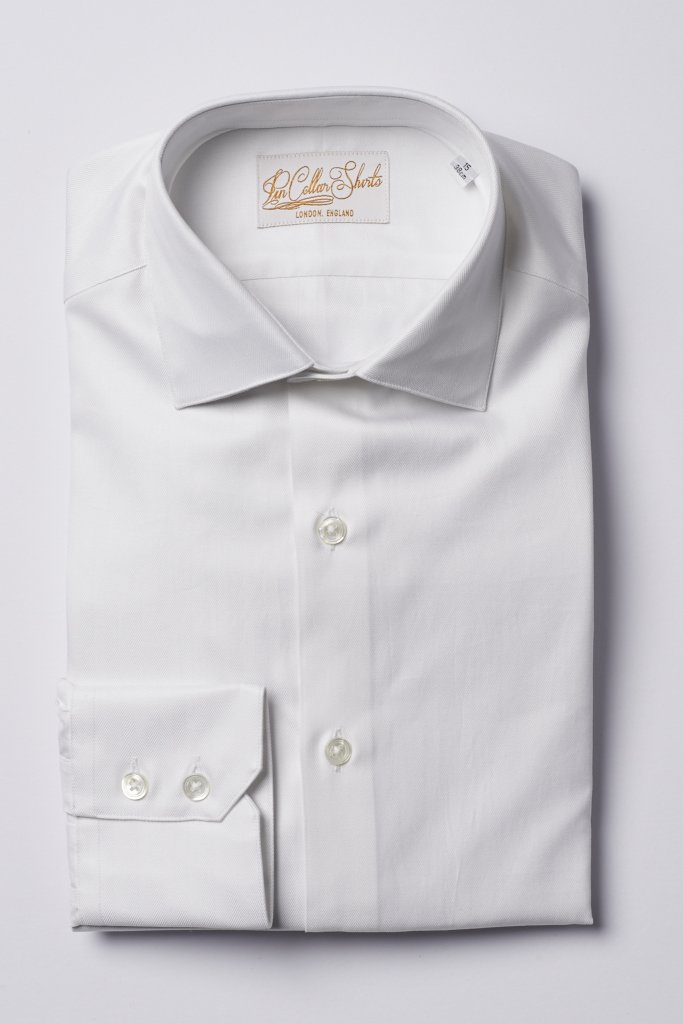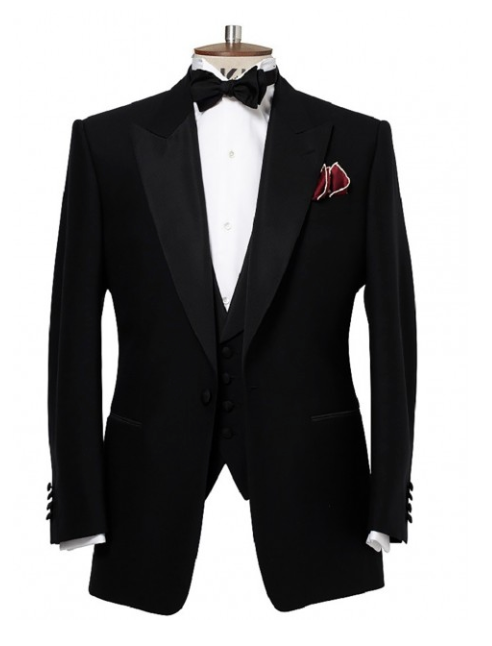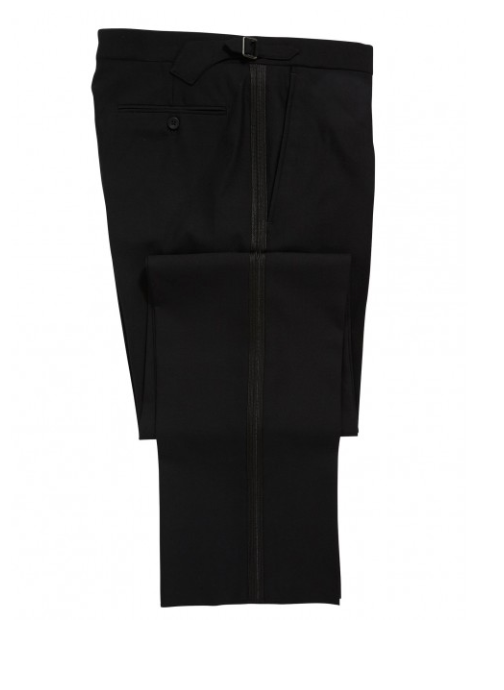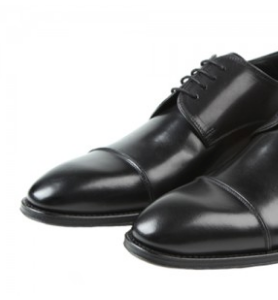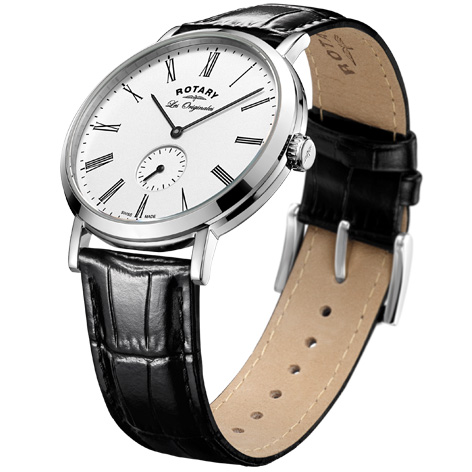How to Wear a Tuxedo | Men's Style Advice as Featured in GQ

If you pick up a copy of the GQ China magazine (December 2017) and turn to the Men's Style Advice section, you'll find my face explaining what I wear for party season. Without duplicating content, I'm using my own platform to explain in a little more detail what I'm wearing, why and some style advice I would give to anyone wanting to look incredible in a tuxedo or as us Brits like to call dinner jackets.
For the GQ China tuxedo style advice section, there was only one tuxedo that I wanted to wear and that was my 3-piece by Savile Row's Chester Barrie. The tailoring put into this tuxedo is the best in the world, it's crafted with the most skilled hands in the business and you can appreciate every stitch and every cut of the pattern as it aligns with your body shape. When looking for a tuxedo to wear for a special occasion, there are a few aspects that for me are a must. Firstly for the dinner jacket, peak bold lapels are an absolute must, they give an element of style, sophistication and screams that you know how to dress and you're not just following high-street trends of modern skinny lapels. The cuffs have to be working cuffs and the buttons should be discrete yet in a design that matches the suits style perfectly.
Moving on to the waistcoat. Firstly make sure it fits well and is not too tight. If it is too tight it will look terrible when sitting down, it will rumple up the shirt underneath and will ultimately make the outfit as a whole look disheveled. The buttons on the waistcoat must match the buttons on your dinner jacket. The cut of the waistcoat should be low cut, this is to champion the shirt underneath and make the bow-tie prominent. If the waistcoat is cut too high there will be no colour transition between the dark suit fabric and the bow-tie. As with this Chester Barrie tuxedo, I love the contrast between the single-breasted blazer and the double-breasted waistcoat as well as the peak cut lapels of the blazer and the elongated curves of the waistcoat lapels.
Kind of obvious but the trouser fabric should match that of the dinner jacket blazer and waistcoat. The trousers should be cut slim but not too skinny and certainly not baggy. Turn-up trousers are welcomed so long as they are tailored at the correct length and the trousers are tapered perfectly - if you need any advice on this, either comment below and I'll get back to you or speak to your local tailor. Leave the belt at home and opt for a pair of trousers with side adjusters.
The shirt is an important part to the perfect tuxedo style. It has to be a crisp white shirt and in my personal opinion have a classic downwards collar. Button-down shirts should not be used, wing-tip shirts can look cheap, like you've just been to a hire shop and give an adolescent appearance. If you want a shirt fabric that is breathable then opt for a lightweight poplin weave in a 2/100s yarn count, if you want more warmth then an Oxford or herringbone weave would be a better option. Many tuxedo shirts are tailored with a fabric called 'Marcella' which has a textured appearance and often used specifically in the bib area of dress shirts. Another option is the wear a pleated shirt. If you are wearing one of these shirts, you'll want to show that in your look and therefore another reason why you should wear a low-cut waistcoat otherwise you'll just cover up the shirt details. For the buttons, I prefer classic, bone coloured mother-of-pearl to leave the chest area clean from too much clutter. A lot of people like to wear black satin covered buttons, although my personal opinion is that they look like a airport landing strip. The cuffs can be either double French cuffs and single cuffs, depending on preference and if you would like to wear cuff-links. My personal preference here is single cuffs, as I think they fit the wrist better and showcase your watch. Sometimes a double French cuff can be tailored too large and therefore covering your watch and unless you spend good money on a decent pair of cuff-links they can look like you've just won them in a Christmas cracker.
Always self tie your bow-tie, no clip-ons and if you don't know how to tie a bow-tie then practice and practice some more because it looks better and you'll get the admiration of your fellow party guests and work colleges. If you would like a YouTube tutorial on how to tie a bow-tie you can watch mine here. After you have mastered it you can play around with the shape of the bow and the knot. Try to make the knot as small as possible and the bow large in a butterfly style. As for the colour to wear, I prefer a classic black bow-tie but feel free to add your own personality here and go for some bold patterns or colours if you wish. Do not match the bow-tie fabric/colour with your pocket square.
Shoes should be black and preferably patent shoes which is a coated leather that gives a glossy, shiny finish. If you decide to wear a pocket square, avoid matching it with the same colour as your bow-tie as it looks tacky, instead why not wear a plain white pocket square or no pocket square at all. If you have gone for an outrageous bow-tie colour and pattern, I would suggest not wearing a pocket square.
Accessorise with a black leather strapped watch, scarf, overcoat and if you live in the UK then of course a large, durable umbrella.
Lastly when starting my blog in 2013 it would have been an absolute dream to have been featured in GQ so this is an incredibly proud moment for me. It's an amazing way to sign off 2017 which has been a successful year but most importantly enjoyable.
SHOP MY LOOK
Photo Credit - Andrew Barber - OmniStyle
Founder of this eponymous blog, focusing on men's fashion & lifestyle.

